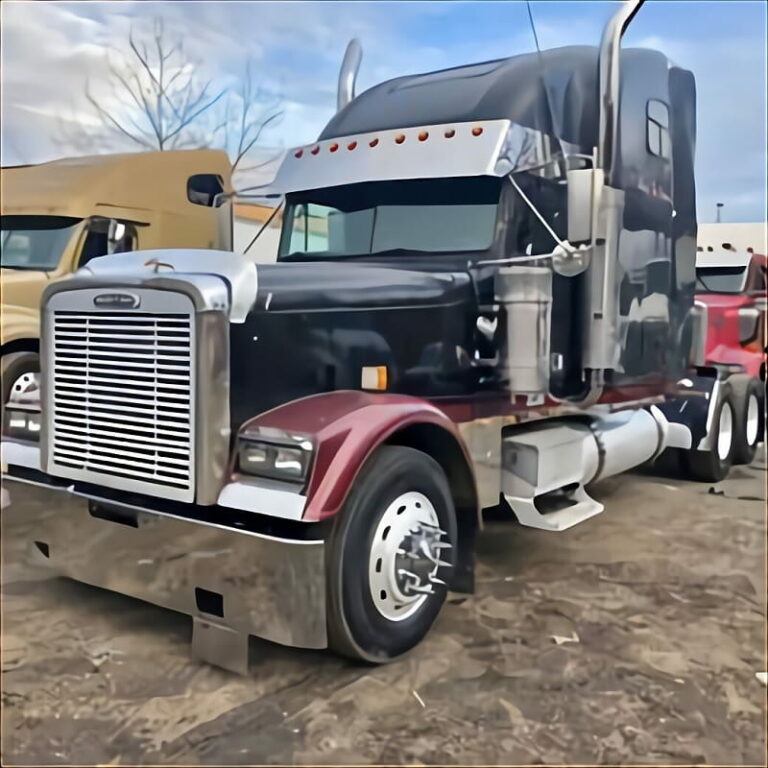Ryder Truck Weight Capacity and Volumetric Capacity: A Comprehensive Guide
Ryder Truck Weight Capacity and Volumetric Capacity: A Comprehensive Guide cars.truckstrend.com
In the world of logistics, transportation, and even personal moves, understanding the capabilities of a vehicle is paramount. When it comes to renting or utilizing a Ryder truck, two critical factors stand out: weight capacity and volumetric capacity. These aren’t just technical specifications; they are the bedrock of safe, efficient, and cost-effective transportation. Misjudging either can lead to a host of problems, from legal fines and vehicle damage to delayed deliveries and increased operational costs.
This comprehensive guide will delve deep into Ryder truck weight and volumetric capacities, offering insights into what they mean, why they matter, and how to effectively leverage them for your specific needs. Whether you’re a small business owner, a logistics manager, or simply planning a household move, mastering these concepts will empower you to make informed decisions and ensure your cargo reaches its destination safely and efficiently.
Ryder Truck Weight Capacity and Volumetric Capacity: A Comprehensive Guide
Understanding Weight Capacity: Payload, GVWR, and GCWR
Weight capacity refers to the maximum amount of weight a truck can safely carry. This isn’t just about the cargo; it encompasses everything added to the truck after it leaves the factory. Ryder, like all truck manufacturers and rental companies, adheres to strict weight limits for safety and regulatory compliance.
Key Weight Terminology:
- Curb Weight: This is the weight of the truck itself, including a full tank of fuel, but without any cargo, passengers, or driver.
- Payload Capacity: This is the maximum weight of cargo (including the driver, passengers, and any additional equipment not part of the truck’s curb weight) that a truck is designed to carry safely. It is calculated by subtracting the truck’s curb weight from its Gross Vehicle Weight Rating (GVWR).
- Gross Vehicle Weight Rating (GVWR): This is the maximum permissible total weight of the truck itself when fully loaded, including the truck’s curb weight, fuel, driver, passengers, and all cargo. This rating is set by the manufacturer and is a critical safety limit. Exceeding the GVWR can strain the vehicle’s chassis, suspension, brakes, and tires, leading to mechanical failure and accidents.
- Gross Combined Weight Rating (GCWR): For trucks designed to pull trailers (like Ryder’s semi-tractors), the GCWR is the maximum allowable weight of the entire combination – the truck, its loaded trailer, driver, and cargo. This is crucial for commercial hauling operations where a tractor-trailer setup is used.

Why Weight Capacity Matters:
- Safety: Overloaded trucks are unstable, difficult to steer, and have significantly reduced braking effectiveness, dramatically increasing the risk of accidents.
- Legal Compliance: Exceeding weight limits can result in hefty fines, legal penalties, and even impoundment of the vehicle, especially at weigh stations.
- Vehicle Integrity: Consistent overloading causes premature wear and tear on vital components like the engine, transmission, suspension, tires, and brakes, leading to costly repairs and reduced vehicle lifespan.
- Fuel Efficiency: Overloaded trucks consume more fuel, increasing operational costs.

Practical Advice for Weight Management:
- Know Your Cargo’s Weight: Before renting, estimate or ideally weigh your cargo. This is the single most important step.
- Distribute Weight Evenly: Load heavier items first, placing them low and centered over the axles to maintain stability. Avoid concentrating all weight at one end.
- Consider a Scale: For commercial operations, access to a truck scale (available at truck stops or landfills) can confirm your loaded weight before you hit the road.
- Factor in "Other" Weight: Remember that the driver, passengers, dollies, moving blankets, and any personal items add to the total weight and reduce available payload.
.png)
Exploring Volumetric Capacity: Cubic Feet and Dimensions
While weight capacity deals with how heavy your cargo is, volumetric capacity addresses how much space it occupies. This is measured in cubic feet and is determined by the interior dimensions of the truck’s cargo area (length, width, and height).
Key Volumetric Terminology:
- Cubic Feet (cu ft): The standard unit for measuring volume. To calculate the cubic feet of a rectangular space, multiply its length by its width by its height (L x W x H).
- Interior Dimensions: The usable length, width, and height of the truck’s cargo bay. It’s important to note that these might vary slightly from published specs due to wheel wells, internal bracing, or slightly rounded corners.
Why Volumetric Capacity Matters:
- Efficiency: Maximizing volumetric space means fewer trips, saving time, fuel, and rental costs.
- Cargo Protection: Properly filling the space, combined with securing items, prevents shifting and potential damage during transit.
- Matching Needs: Choosing a truck that’s too small means leaving items behind or making multiple, costly trips. Choosing one that’s too large means paying for unused space.
Practical Advice for Volumetric Management:
- Measure Your Items: Before loading, measure the largest and most awkwardly shaped items.
- Visualize the Space: Use the truck’s interior dimensions to mentally (or physically with tape on the floor) map out how items will fit.
- Load Strategically:
- Heaviest and Largest First: Place these against the back wall and floor.
- Fill from Bottom Up: Stack items securely, ensuring stability.
- Utilize All Dimensions: Don’t just think floor space; stack vertically, use the corners, and fill gaps with smaller, lighter items or moving blankets.
- Disassemble When Possible: Beds, tables, and shelves take up less space when taken apart.
- "Tetris" Method: Pack boxes tightly together, avoiding empty spaces.
- Leave Access: If you need to access items during transit, consider loading them last or near the back door.
Types of Ryder Trucks and Their Capacities
Ryder offers a diverse fleet to meet a wide range of needs, from small personal moves to large-scale commercial logistics. Here’s a breakdown of common Ryder truck types and their typical capacity ranges:
-
Cargo Vans:
- Weight Capacity (Payload): 2,000 – 3,000 lbs
- Volumetric Capacity: 250 – 300 cu ft
- Use: Small deliveries, hauling personal items, equipment for service technicians.
-
Small Box Trucks (e.g., 12-16 ft):
- Weight Capacity (Payload): 2,500 – 6,000 lbs
- Volumetric Capacity: 450 – 950 cu ft
- Use: Studio or 1-bedroom apartment moves, small business deliveries, hauling appliances. Often come with a ramp for easier loading.
-
Medium Box Trucks (e.g., 22 ft):
- Weight Capacity (Payload): 7,000 – 10,000 lbs
- Volumetric Capacity: 1,200 – 1,400 cu ft
- Use: 3-4 bedroom house moves, larger commercial deliveries. Often equipped with a liftgate for heavier items.
-
Large Box Trucks (e.g., 26 ft):
- Weight Capacity (Payload): 8,000 – 12,000 lbs
- Volumetric Capacity: 1,500 – 1,700 cu ft
- Use: 4+ bedroom house moves, significant commercial cargo. Typically come with a liftgate. These are often the largest non-CDL required trucks.
-
Tractor-Trailers (Semi-Trucks):
- Weight Capacity (Payload): Varies significantly based on trailer type (e.g., 42,000 – 45,000 lbs for a 53 ft dry van).
- Volumetric Capacity: Varies significantly (e.g., 3,800 – 4,000 cu ft for a 53 ft dry van).
- Use: High-volume, heavy-weight commercial freight. Requires a Commercial Driver’s License (CDL). Ryder offers various trailer types including dry vans, refrigerated (reefer) trailers, and flatbeds.
Factors Influencing Your Capacity Choice
Choosing the right Ryder truck isn’t just about picking the biggest one. It involves a careful assessment of several factors:
- Nature of Cargo: Is it dense and heavy (e.g., machinery, books) or bulky and light (e.g., furniture, insulation)? This will dictate whether weight or volume is your primary constraint.
- Total Weight: Accurately estimate the total weight of all items.
- Total Volume: Estimate the total cubic footage required. Online moving calculators can be helpful.
- Fragility: Delicate items might require more packing material and less dense loading, effectively reducing usable volume.
- Loading/Unloading Environment: Do you have a loading dock, or will you need a truck with a ramp or a liftgate? Liftgates add to the truck’s curb weight, slightly reducing payload.
- Driver’s License: Most box trucks up to 26 feet can be driven with a standard Class D driver’s license. Semi-tractors require a CDL.
- Route and Terrain: Steep inclines or long distances might warrant a slightly larger engine or a truck with a higher GVWR, even if not strictly necessary for the weight.
Practical Advice and Actionable Insights
- Overestimate, Don’t Underestimate: When in doubt, go for a slightly larger truck than you think you need. It’s far better to have a little extra space and capacity than to run out.
- Utilize Ryder’s Resources: Ryder’s website often provides detailed specifications for each truck model. Don’t hesitate to call their customer service representatives; they are trained to help you select the right vehicle.
- Conduct a Pre-Load Inventory: Make a list of all items, especially large or heavy ones. This helps in estimating both weight and volume.
- Measure Doorways and Hallways: For residential moves, ensure your furniture will fit through the truck’s cargo door and your home’s doorways.
- Secure Your Load: Regardless of weight or volume, always use straps, ropes, and moving blankets to secure items and prevent shifting during transit. This is crucial for both cargo integrity and vehicle stability.
- Understand Rental Agreements: Read the fine print regarding mileage charges, fuel policies, and any potential penalties for misuse or damage.
Challenges and Solutions
- Challenge: Underestimating Needs: Leads to multiple trips, wasted time, and higher costs.
- Solution: Use online calculators, measure meticulously, and consider the "next size up" principle.
- Challenge: Overloading: Dangerous, illegal, and damaging to the truck.
- Solution: Be honest about your cargo’s weight. If you’re close to the limit, offload non-essential items or rent a larger truck.
- Challenge: Inefficient Packing: Wastes valuable volumetric space.
- Solution: Plan your load, disassemble furniture, use uniform box sizes, and pack tightly like a puzzle.
- Challenge: Last-Minute Changes: Unexpected items or changes in plans.
- Solution: Maintain some flexibility in your schedule and budget. Communicate with Ryder if you anticipate needing a different truck size.
Ryder Truck Capacity and Estimated Rental Costs
Please note: The prices below are estimated daily rental costs and can vary significantly based on location, availability, duration of rental, specific truck features (e.g., liftgate), mileage packages, and time of year. Always confirm current pricing directly with Ryder.
| Truck Type | Typical Payload Capacity (lbs) | Volumetric Capacity (cu ft) | Interior Dimensions (L x W x H) (approx.) | Estimated Daily Rental Cost (USD) | Common Use Cases | Driver’s License |
|---|---|---|---|---|---|---|
| Cargo Van | 2,000 – 3,000 | 250 – 300 | 10′ x 4.5′ x 4.5′ | $60 – $90 | Small deliveries, personal items, light hauling | Standard Class D |
| 12 ft Box Truck | 2,500 – 3,500 | 450 – 550 | 12′ x 7.5′ x 6.5′ | $80 – $120 | Studio/1-bed apartment, small business deliveries | Standard Class D |
| 16 ft Box Truck | 4,000 – 6,000 | 800 – 950 | 16′ x 7.5′ x 7.5′ | $90 – $140 | 2-3 bed apartment, medium business deliveries | Standard Class D |
| 22 ft Box Truck | 7,000 – 10,000 | 1,200 – 1,400 | 22′ x 8′ x 8′ | $100 – $160 | 3-4 bed house, larger commercial moves | Standard Class D |
| 26 ft Box Truck | 8,000 – 12,000 | 1,500 – 1,700 | 26′ x 8′ x 8.5′ | $110 – $180 | 4+ bed house, large commercial moves | Standard Class D |
| Semi-Tractor (Day Cab) | N/A (Trailer Dependent) | N/A (Trailer Dependent) | N/A | $150 – $250+ | Hauling various trailers (dry van, reefer, flatbed) | CDL |
| 53 ft Dry Van Trailer | 42,000 – 45,000 | 3,800 – 4,000 | 53′ x 8.2′ x 9′ | (Included w/tractor or separate rental) | General freight, consumer goods | N/A (Trailer) |
Frequently Asked Questions (FAQ)
Q1: What’s the main difference between payload capacity and GVWR?
A1: Payload capacity is the maximum weight of cargo (and occupants/added equipment) you can put into the truck. GVWR (Gross Vehicle Weight Rating) is the maximum total weight the fully loaded truck itself can be, including its own weight, fuel, and all payload. Payload = GVWR – Curb Weight.
Q2: How do I know what size Ryder truck I need for my move?
A2: Estimate your total belongings’ volume (cubic feet) and weight. Ryder’s website offers guides, or you can use online moving calculators. For example, a 1-bedroom apartment typically needs a 12-16 ft truck, while a 3-4 bedroom house might need a 22-26 ft truck. Always consider the largest, bulkiest items you have.
Q3: Can I drive any Ryder truck with a regular driver’s license?
A3: Most Ryder cargo vans and box trucks up to 26 feet can be driven with a standard Class D driver’s license (non-commercial). However, any vehicle with a GVWR of 26,001 lbs or more, or any combination of vehicles with a GCWR of 26,001 lbs or more (where the towed unit is over 10,000 lbs), requires a Commercial Driver’s License (CDL). Ryder semi-tractors always require a CDL.
Q4: What happens if I overload a Ryder truck?
A4: Overloading is dangerous and illegal. You risk fines, vehicle breakdown, reduced braking effectiveness, unstable handling, and increased accident risk. Ryder’s rental agreement will likely hold you responsible for any damage or legal issues arising from overloading.
Q5: Do Ryder trucks come with liftgates or ramps?
A5: Many of Ryder’s medium (22 ft) and large (26 ft) box trucks, as well as some specialized commercial vehicles, come equipped with liftgates for easier loading and unloading of heavy items. Smaller box trucks (12-16 ft) often have pull-out ramps. It’s crucial to confirm the availability of these features when reserving your truck if you need them.
Q6: How accurate are Ryder’s capacity estimates?
A6: Ryder’s published capacity estimates are generally accurate and based on manufacturer specifications. However, they are maximums. Real-world usable space might vary slightly due to internal features (e.g., wheel wells) or the nature of your cargo. Always err on the side of caution and slightly overestimate your needs.
Conclusion
Navigating the world of Ryder truck weight and volumetric capacity is fundamental to successful transportation. By understanding the definitions, recognizing the implications of exceeding limits, and employing smart planning and loading strategies, you can ensure your cargo is transported safely, efficiently, and in compliance with regulations.
Whether you’re moving a household or managing a complex commercial supply chain, Ryder offers a diverse fleet to meet almost any need. The key lies in precise measurement, informed decision-making, and a commitment to safety. Take the time to assess your cargo, choose the right truck, and pack it wisely, and you’ll experience the full benefits of Ryder’s reliable transportation solutions.



